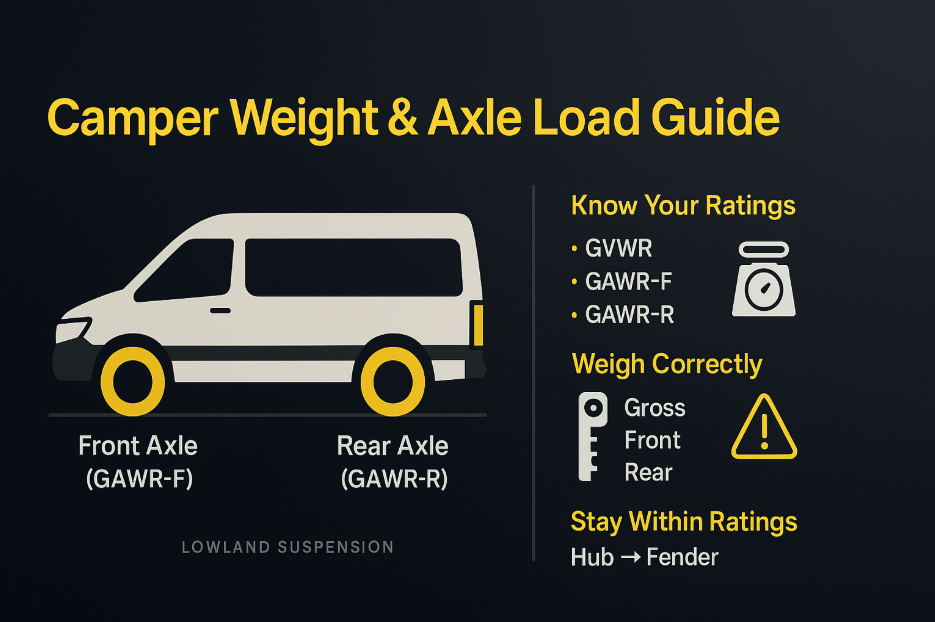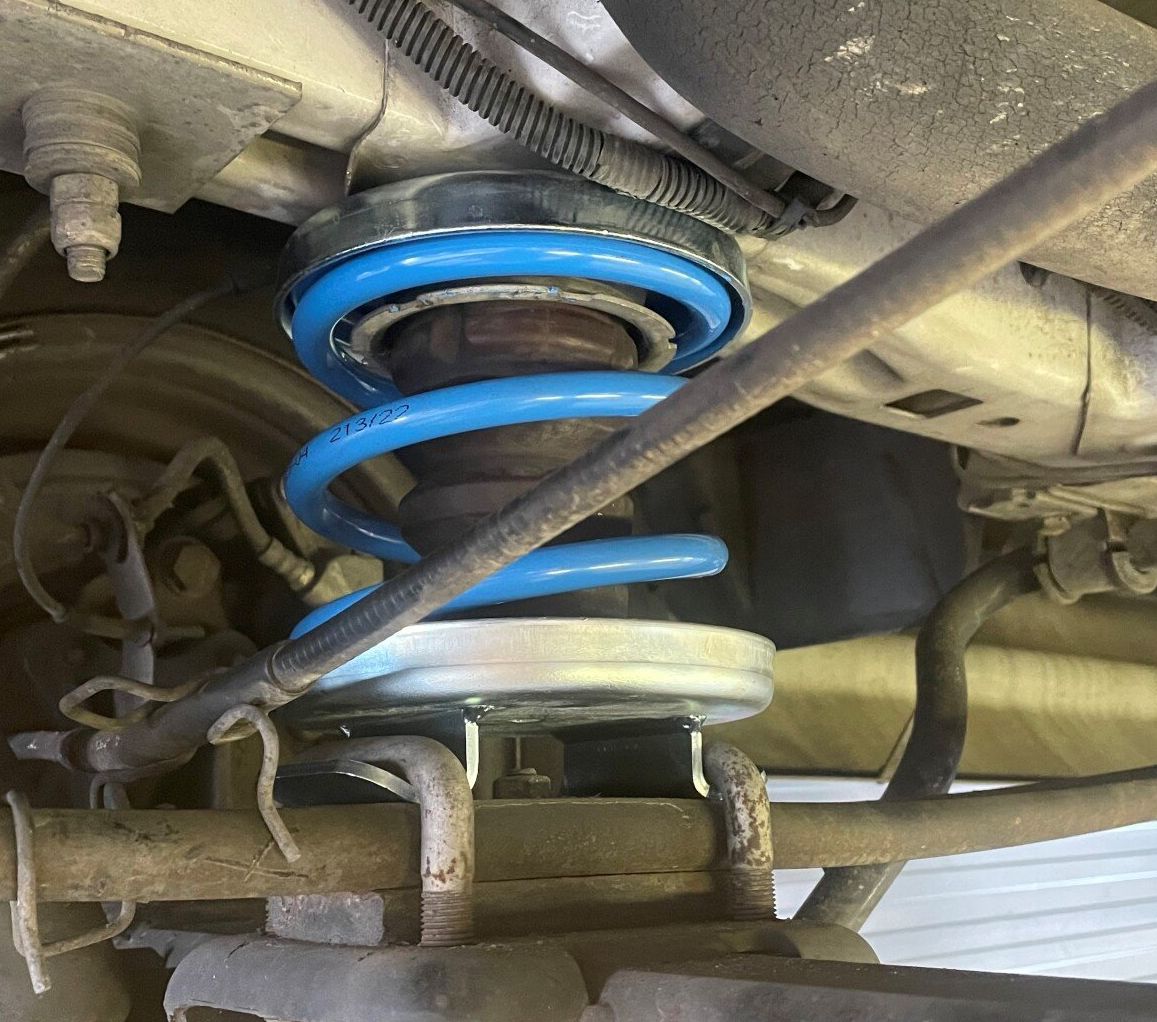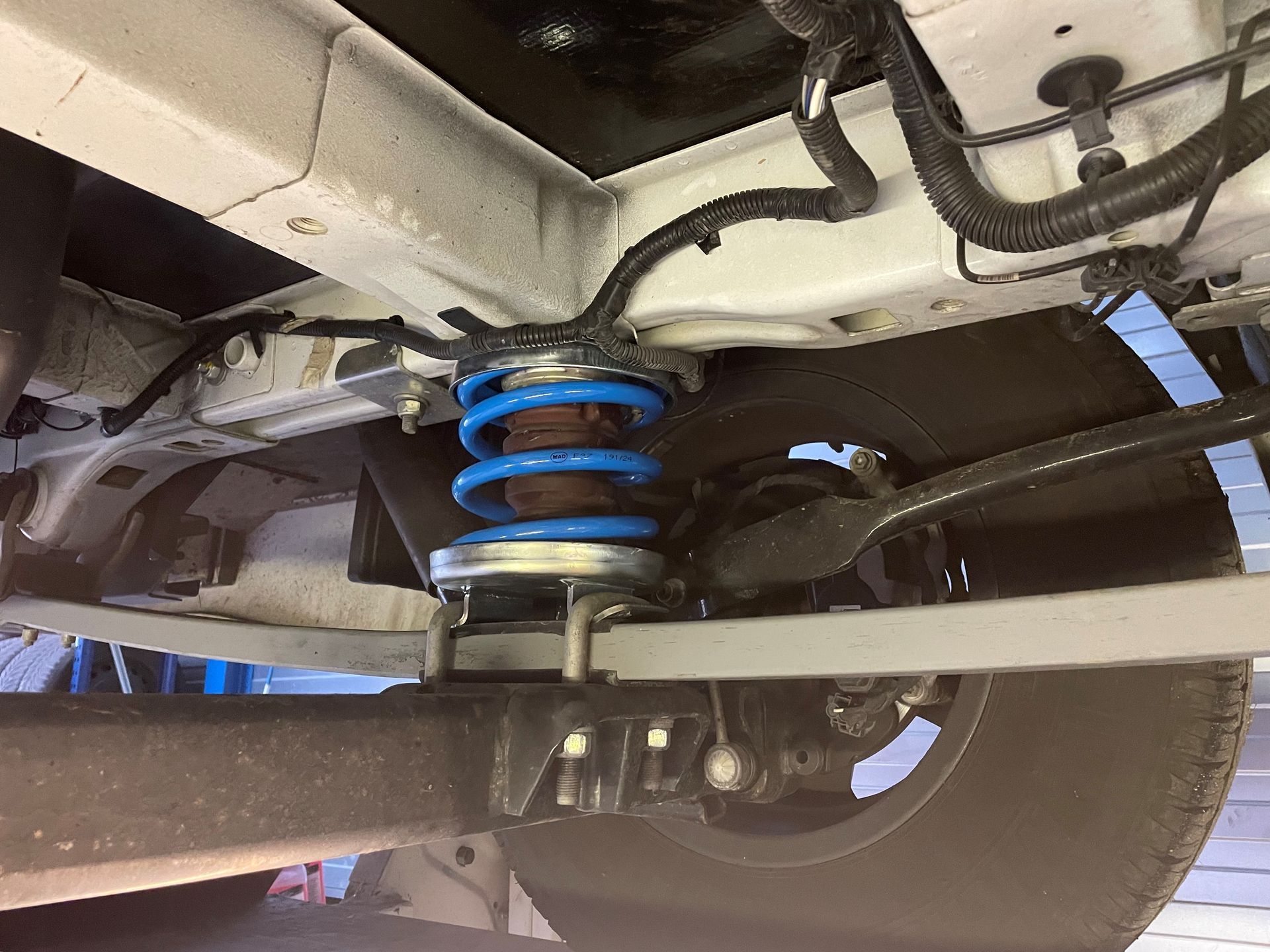TL;DR 30-second read
- Rear sags only when loaded: add helper springs (progressive support).
- Front sits low all the time: use reinforced coils (constant heavy load).
- Side-to-side lean or regular leveling needs: consider air suspension.
- Tall build/long overhang: helper springs + quality dampers or a MAD Special Duty Kit.
GVWR, GAWR, Payload — Quick Definitions
- GVWR(Gross Vehicle Weight Rating): max legal vehicle weight (van + people + fuel + gear + water, etc.).
- GAWR(Gross Axle Weight Rating): max allowed weight on each axle (front/rear). SRW/DRW differ.
- Curb Weight: empty van with standard equipment and fluids, no cargo.
- Payload: GVWR − curb weight. What you can add.
How to Weigh Your Van (Step-by-Step)
- Load for a real trip. Full fuel, people, water, gear, bikes—how you actually travel.
- Find a public scale(truck stop/CAT scale, gravel yard, waste transfer). Keep your ticket(s).
- Three-pass method:
- Pass 1 — Entire van on the scale: record Gross Weight.
- Pass 2 — Only front axle on the scale: record Front Axle Weight.
- Pass 3 — Only rear axle on the scale: record Rear Axle Weight.
- Compare each number to GVWR/GAWR. If you’re near the limit (>90%), plan suspension support and cargo redistribution.
- Optional: For side-to-side issues, look for RV shops with four-corner scales.
Check Ride Height & Lean
- Park level; set tire pressures to door-label specs (do not exceed tire max).
- Measure hub center → fender lip at all four corners.
- Record empty and loaded numbers.
Rules of thumb: a drop of >15–25 mm(≈0.6–1.0 in) is noticeable; >30–40 mm(≈1.2–1.6 in) usually warrants an upgrade.
Diagnose the Problem
| Symptom | Likely Cause | Notes |
|---|---|---|
| Rear sags only when loaded | Variable payload overwhelms rear springs | Common on Sprinter/Transit/ProMaster campers with long overhang |
| Front sits low all the time | Constant heavy build (batteries, cabinets, bull bar, winch) | Typical on FWD ProMaster and some Transits |
| Leans left/right | Asymmetric layout (kitchen/slide-out/water) | Air assist helps level; check four-corner weights |
| Sways in crosswind | High center of gravity + soft rear under load | Progressive support + quality dampers improve control |
| Harsh empty ride after upgrades | Rate too high for constant use | Favor progressive helper springs for variable payload |
Pick the Right Fix
Helper Springs (Rear) — Progressive support under load
- Restore loaded ride height and reduce sway without making the empty ride harsh.
- Great for variable payload campers and cargo conversions.
Reinforced Coil Springs (Front) — Constant heavy load
- Best when the nose sits low all the time from permanent build weight.
- Durable, no air system to maintain.
Air Suspension — Leveling & left/right correction
- Lets you fine-tune height and side-to-side balance.
- Higher cost/complexity; useful for frequent leveling at camp.
Special Duty & Dampers — For tall builds/long overhang
- Where available, MAD Special Duty Kits add stout support for heavy camper bodies.
- Pair with quality shocks to reduce bounce and roll.
What Results to Expect
- Ride height: typical loaded lift in the rear can be from a few millimeters to several centimeters(≈0.2–1.5 in), depending on kit and weight.
- Stability: reduced rear “wallow,” better crosswind behavior, calmer steering.
- Comfort: with progressive helper springs, empty ride remains close to stock.
Actual results vary by model, axle load, wheelbase, and build layout.
Printable Checklist Trip-ready
- Door sticker: record GVWR / GAWR-F / GAWR-R and tire pressures.
- Scale tickets: Gross, Front, Rear(loaded as traveled).
- Ride height (hub→fender): FL / FR / RL / RR empty and loaded.
- Tire pressures set to door-label (check cold).
- Noted symptoms: sag, sway, lean, bounce, porpoising.
- Pick remedy: rear helper springs / front reinforced coils / air assist / Special Duty.
FAQs
Will suspension upgrades raise my legal weight ratings?
No. They improve stance and control but do not change GVWR/GAWR. Always stay within the posted ratings.
How do I fix side-to-side lean from an uneven camper layout?
Get four-corner weights if possible. Air assist can fine-tune left/right; also check spring condition and weight placement.
Helper springs or air for a ProMaster camper?
For typical variable load and rear sag, progressive helper springs are the value choice. Pick air if you need frequent leveling or left/right tuning.
Do reinforced coils make the ride harsher?
They can feel firmer, especially when empty. They’re ideal for constant heavy front loads; for mixed use, consider progressive support in the rear.
Can I combine helper springs with better shocks?
Yes—often the best combination for control under load and comfort when cruising.





